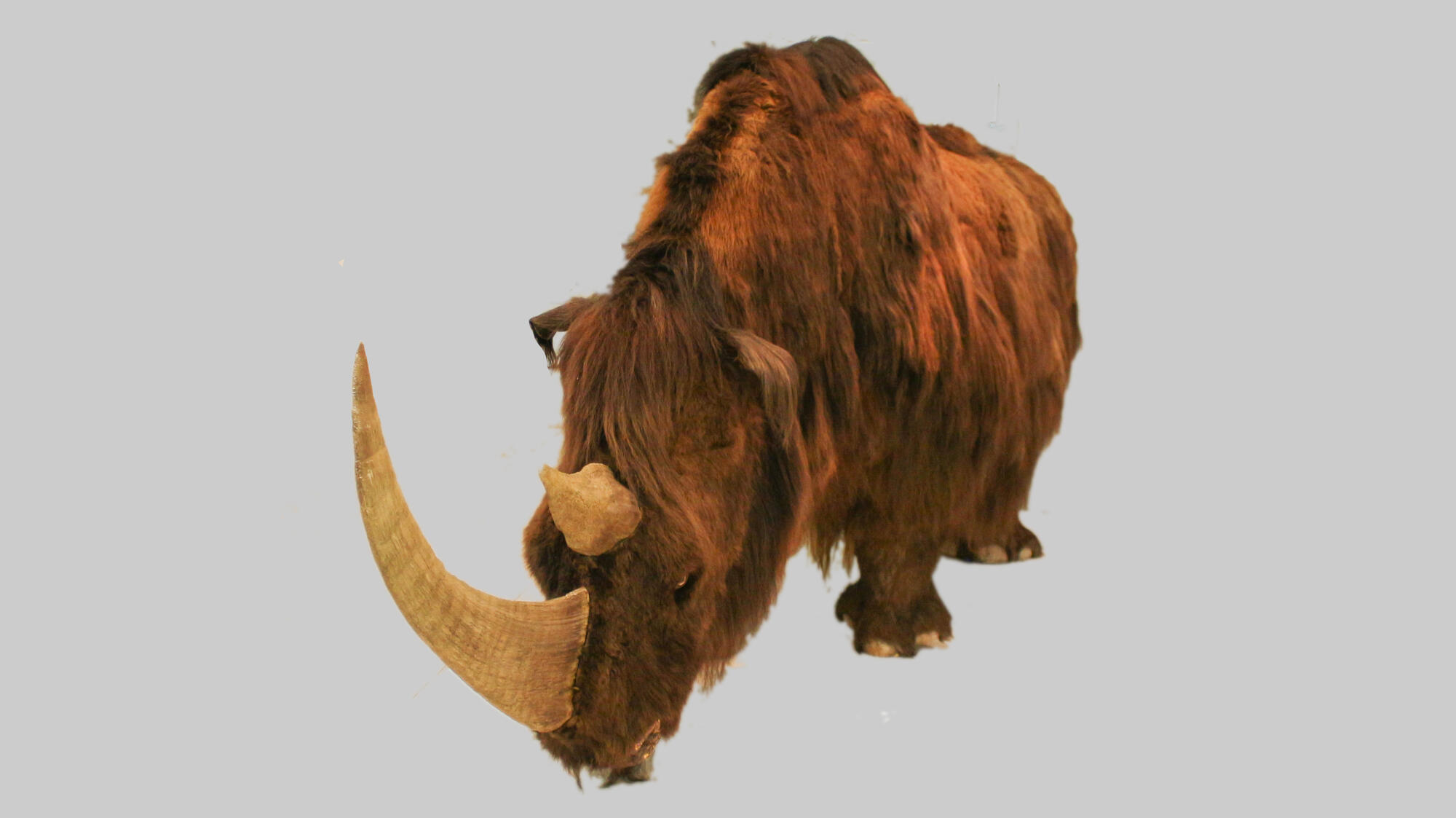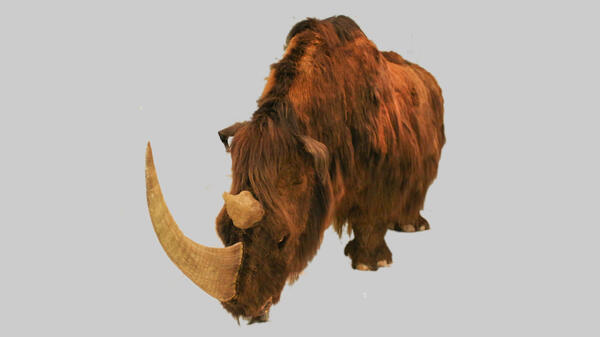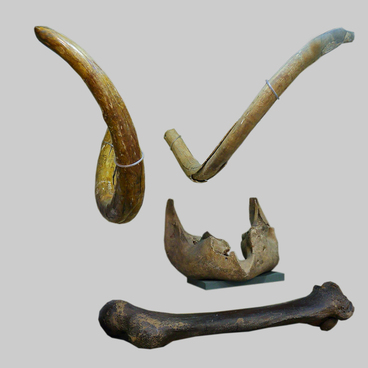The woolly rhinoceros is an extinct odd-toed ungulate mammal in the Rhinocerotidae family. These animals inhabited the vast open lands of Europe and Asia in the Pleistocene and early Holocene periods, before disappearing completely some 8,000 to 14,000 years ago. They resembled modern rhinos, but had a more elongated body and head and shorter legs.
The woolly rhinoceros had a big hump on the back of its neck, which consisted of highly developed muscles. It eased the strain on the neck from the huge, heavy horn, and stored fat to supply the body with nutrients in case of hunger. The animal’s body was covered with thick, long reddish-brown hair, which sometimes had a yellowish tone. There was a thin but thick undercoat under the coarse top coat. The long and coarse hair at the top of the shoulders and on the neck resembled a mane. The tail ended with a switch.
The woolly rhinoceros was a very large animal. It had an average shoulder height of 1.5 meters, with large individuals measuring 1.9 or even two meters. Its body was up to 4.5 meters long. Large individuals could weigh up to 3.5 metric tons, although not all animals reached this mass. The woolly rhinoceros was the second largest representative of the mammoth fauna, being second only to the mammoth.
Woolly rhinoceroses were well adapted to life in cold climates, on open terrain with minimal snow cover and grassy vegetation. Like modern rhinoceroses, they probably preferred to graze near rivers and other bodies of water. Scientists think that woolly rhinoceroses were solitary and did not form herds and groups.
Like all rhinos, they were exclusively herbIvorous. They ate mainly herbAceous plants, which grew in abundance in the mammoth steppe. In winter, they cleared the snow with their horns to get to food.
Images of woolly rhinoceroses are often found in cave paintings left by the primitive hunting tribes of Europe and Asia. These animals often fell prey of hunters, which, together with the climate change, led to their extinction.
The woolly rhinoceros had a big hump on the back of its neck, which consisted of highly developed muscles. It eased the strain on the neck from the huge, heavy horn, and stored fat to supply the body with nutrients in case of hunger. The animal’s body was covered with thick, long reddish-brown hair, which sometimes had a yellowish tone. There was a thin but thick undercoat under the coarse top coat. The long and coarse hair at the top of the shoulders and on the neck resembled a mane. The tail ended with a switch.
The woolly rhinoceros was a very large animal. It had an average shoulder height of 1.5 meters, with large individuals measuring 1.9 or even two meters. Its body was up to 4.5 meters long. Large individuals could weigh up to 3.5 metric tons, although not all animals reached this mass. The woolly rhinoceros was the second largest representative of the mammoth fauna, being second only to the mammoth.
Woolly rhinoceroses were well adapted to life in cold climates, on open terrain with minimal snow cover and grassy vegetation. Like modern rhinoceroses, they probably preferred to graze near rivers and other bodies of water. Scientists think that woolly rhinoceroses were solitary and did not form herds and groups.
Like all rhinos, they were exclusively herbIvorous. They ate mainly herbAceous plants, which grew in abundance in the mammoth steppe. In winter, they cleared the snow with their horns to get to food.
Images of woolly rhinoceroses are often found in cave paintings left by the primitive hunting tribes of Europe and Asia. These animals often fell prey of hunters, which, together with the climate change, led to their extinction.



